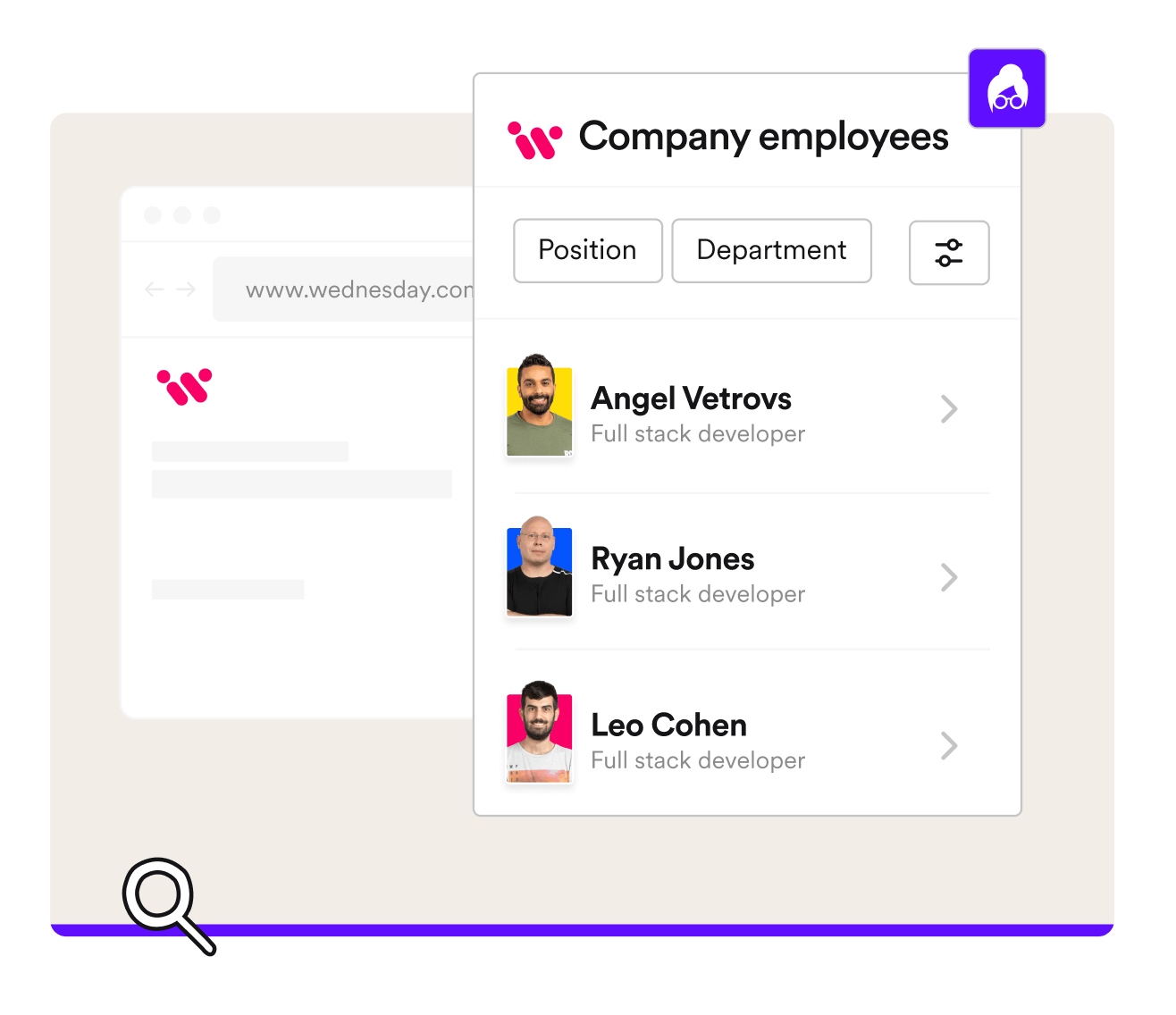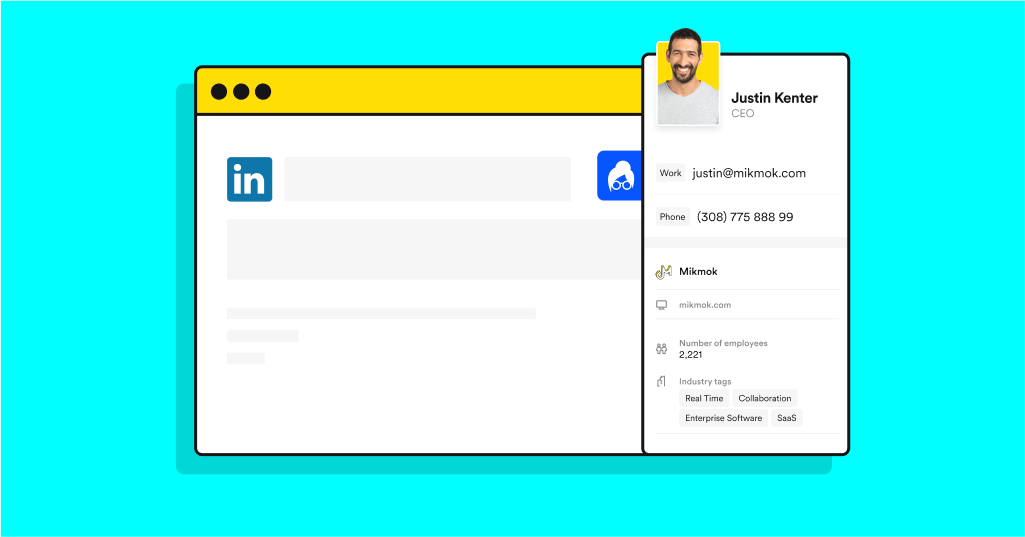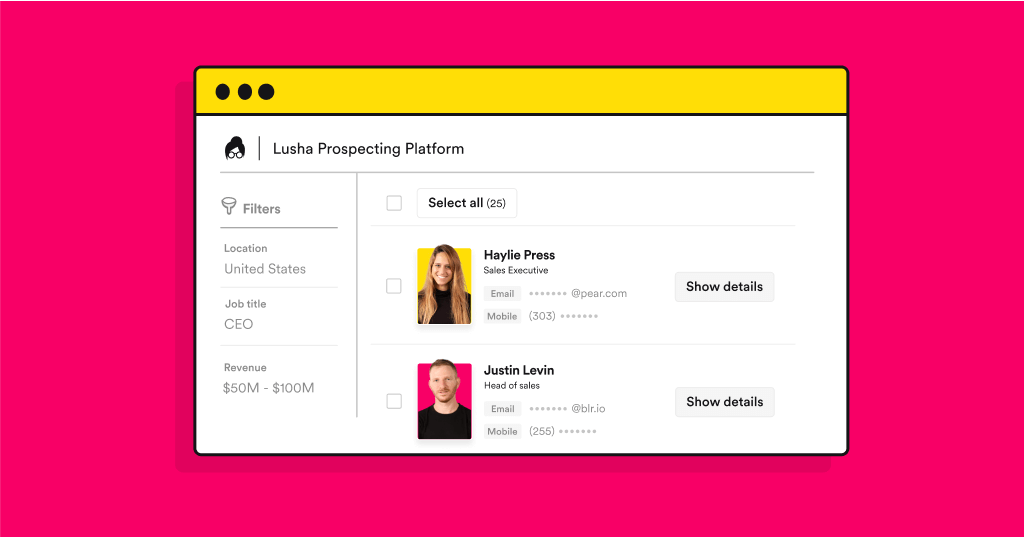At its core, the idea of prospecting is pretty simple. Find the person with a problem to solve, then reach out to them and show how you can help solve it. Cool, done. Of course, the reality ends up being a little more complicated (don’t you hate it when that happens). Not to mention, there’s […]
At its core, the idea of prospecting is pretty simple. Find the person with a problem to solve, then reach out to them and show how you can help solve it. Cool, done.
Of course, the reality ends up being a little more complicated (don’t you hate it when that happens). Not to mention, there’s a lot riding on the quality of your prospecting list.
So you have to make sure that the list you build is a good one, filled with quality prospects who are a good fit for your company. And, of course, the right contact data for all of them. There are a lot of ways to build your prospecting list, but the core best practices will apply no matter your tools.
Let’s get into it.
What is a prospecting list?
It’s pretty straightforward – a prospecting list is a datasheet of potential customers you want to get in touch with. The people on the list are ones who fit your ideal customer profile (ICP). Simple, right?
Of course, you want to make sure you get it right when you’re building out your list. These targeted leads can be considered “qualified” in the sense that they already meet some basic criteria just to get put on the list in the first place. Then once your list is complete, you can reach out and have a conversation with potential customers you know you’re relevant for.
How to build a prospect list: the foundational steps
Know your product inside and out
The first step to building out your prospecting list is to know your product backwards and forwards. The better you know what you’re selling down to each tiny, granular detail, the better you know what kind of prospects will be a good fit. Plus, it’ll help you nail your talk tracks for the conversation you’ll have once you get in touch with those leads on your list.
Things you should know about your product as you prepare to prospect include:
- The most common use cases (and maybe some uncommon ones too)
- Your major competitors and your key differentiators against them
- The parts that trip up deals – what are the pitfalls of your product and common objections?
Product learning should be continuous. It’s not something you just do every once in a while when an update gets launched. Instead, make a regular practice out of watching back sales calls and reading customer success stories. That way, you’ll know exactly how your product works for your customers.
Nail down your personas
Speaking of customers, your best ones are going to have quite a few things in common with each other. Buyer personas will be created by your marketing and sales enablement teams, with some input from sales ops – it’s a team effort. Things you can learn from personas include:
Company information
- Industry
- Size/headcount
- Location
- Revenue
- Tech stack (technographics)
Individual information
- Prospect’s role in the org
- Motivations
- pain points/challenges
- Goals
- KPIs
- The benefits they receive from your product/service
When you start building your prospecting list, those demographic details are going to be what you look for: what contacts in your target roles work at companies that fit your personas?
Organize your prospecting information
Obviously, you’re going to be collecting a lot of information on prospects before you even start reaching out to them. Where do you keep all of it?
There’s not a strict rule here. A prospecting list could be as simple as a literal paper list, although we really, really don’t recommend that. Some salespeople rely on CSV files, Excel spreadsheets, or Google Sheets. Those are definitely cheap and easy options, but like a lot of cheap things, they might cost you more in the long run. Doing a manual prospecting list on a simple spreadsheet can take a lot of time and effort, not to mention all the room for error.
The best way to organize your prospecting information is with a CRM like Salesforce, Pipedrive, Zoho…the list could go on. Using an automated platform like CRM software can keep track of all the moving parts of your prospecting process. And your CRM can help you double check whether you (or someone else at the company) have already talked to this prospect.
Plus, when you’re using an established CRM, you get the opportunity to take advantage of integrations with other popular sales tech. That way all your automations flow smoothly together from one stage of the funnel to the next.
Go get your data
All right, enough planning. Time to get some names on this bad boy.
So…where do you start?
You have a lot of options. The internet is a big, wide world with many ways to look for your future customers. We’ll let you come to your own conclusions after you see the options. Let’s talk about some of the main ways salespeople find prospects online.
3 ways to build your prospecting list
1. Browse the web to find prospects.
This method works best when you have some specifics in mind. You’ve probably got at least a few companies on your radar that you’d like to snag. Maybe you just read about them on Forbes or saw on Tech Crunch that they’ve had a recent funding round.

Well, head on over to their website. Most company websites aren’t going to give you more than a few crumbs about how to contact them, and they’re not super useful for prospecting – just an info@ email address or an HQ phone number. Good luck drilling down to a specific, relevant contact using just those contact details, right?
But all is not lost. Using a browser extension can make it easy. For example, in addition to our platform, Lusha has a browser extension offering, Lusha Everywhere (which, by the way, can get you 5 free contact details every month, forever). With Lusha Everywhere you can search by department or get an entire employee list. Zero in on the employee(s) that fit your persona, and in a single click you can get direct, accurate contact details. Then just save them to your CRM or export to a CSV file. Easy, done.
2. Using LinkedIn to build your prospecting list.
LinkedIn is everyone’s favorite way to spot new potential prospects, right? There are a few ways you use LinkedIn for sales prospecting. One way is to look through the comment section of popular posts to find people who talk about needing a solution like yours. Another method is to look at “People Also Viewed” in the sidebar for the profile of your star customer to find prospects just like them.
Those are good tactics, but they’re better for adding to your list, not for building an extensive list in the first place. For a more direct (and scalable) approach, you’ll want to use a tool that can help you find the best people on LinkedIn. 
One easy way? Lusha Everywhere, our free web extension. We’re a little biased, but we’re also pretty sure you’ll see it’s a powerhouse addition to your LinkedIn strategy. It’s a free prospecting and data enrichment tool that allows you to find prospect’s contact details (like direct dial and email address) in one click. Plus, you’ll also get helpful company information like when the company was founded, their industries, headquarters, technographics (tech stack information), and their social media handles.
3. Use a sales intelligence tool for prospecting.
This is one of the most common ways to build your prospecting list, and for good reason. No need to traipse around the internet when you can go to one direct platform and use it like a search engine that lets you find your ideal buyer using a host of useful filters. If you’re like most salespeople, you want to build a list of thousands of prospects (and, of course, a way to actually contact them) as fast as you can.
Yep, that won’t be a problem (that’s not sarcasm). There’s tons of sales intelligence tools out there; take your pick. Of course, some of them are going to fit your needs better than others.
If you’ll allow a shameless plug, we’ll talk about how a B2B Prospecting tool/sales intelligence solution can help you build a prospecting list – using ourselves as an example. 
With Lusha, you can search a database of millions of prospects with filters like:
- Company location
- Industry
- Employee count
- Revenue
- Department
- Seniority
- Job title
That’s just the basics, though. You can also use more advanced filters to fine-tune your search. For example, the job change filter allows you to find contacts who are new to their position. Or you can use the technology filter to dive into prospects’ tech stacks and find tools you integrate with. Plus, a sales intelligence tool like Lusha can come with the option of paying for intent data, which shows companies that are actively looking for a solution like yours. That means you can prioritize prospects from companies that show high intent and put them to the top of your list.
And, in just one click you can get your prospect’s accurate contact details like their direct dial information and email addresses.
Best of all? It’s free to sign up and you get 5 free contact details every month, plus lots of cool ways to earn free credits (one credit = one prospect’s contact details.)
Once you’ve found the prospect or prospects you’d like to add to your prospect list, you can do so in Lusha, save them to your CRM or sales automation tool, or export them to a CSV or Excel file.
What information is included on a prospect list?
Okay, so we’ve gone over how to build your prospecting list. Now you might be wondering what to put on it.
Honestly, the more information, the better.
You’ll want the basics, like:
- Name
- Position
- Company
- Phone Number
- Email Address
But every detail you add to your list will help you build your best possible pitch when you reach out to them. So think of what else might be helpful here: extra company details like industry, size, and tech stack or your prospects’ social media profile so you can research for personalization opportunities.
Why build a list when you can just buy one?
Okay, we just covered a lot of ground there. And while creating a prospecting list is a simple concept, in practice it can take some time and effort.
Sometimes people fall into the trap of thinking that it’s easier to just buy a lead list than to go in and create one yourself. But what looks easier might actually cause you some trouble down the line.
You want your prospecting list to have accurate, up-to-date information. Not to mention, you want it to to be up to speed with the latest data privacy laws like GDPR and CCPA.
With a sales intelligence database like Lusha, you can make sure that your prospecting data is fresh, dynamic, and compliant.
Meanwhile, purchased email lists from unreliable sources don’t exactly have the best track record. They’re full of inaccurate information, which wastes your time, causes missed opportunities, and is frankly just discouraging. And even worse, they might have non-compliant contact data, which could result in some big fines.
It’s better to build a list yourself. That way, you can guarantee the quality and compliance of your prospect list. Plus, you can drill down to get a truly targeted list.
And while purchasing an email list can seem easy and quick, it turns out using a sales intelligence tool is easy and quick too. You don’t have to take our word for it, either. Zesty used Lusha and had immediate results:
“The results with Lusha are immediate. You search for the prospect, you get the information you need, enroll the prospect in the right sequence or whatever outreach tool you’re using, you reach out, and you’re done.”
Try it for yourself and get ready to hit paydirt with your best-ever prospecting list.
Key Takeaways
- When you’re creating a prospecting list, it’s important to always keep your personas in mind and organize your data for easy access and updates.
- While it’s tempting to buy a ready-made prospecting list, it’s best to build them yourself using a platform (like Lusha) so you can ensure data accuracy, relevance, and compliance.
- You can create a prospecting list in a few different ways with Lusha, whether that’s on LinkedIn, on the web, or in our platform.

